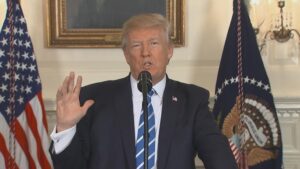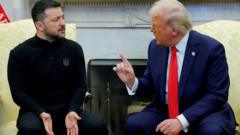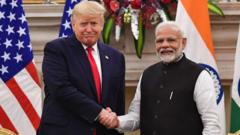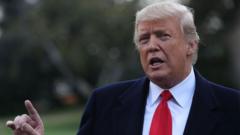Legal challenges to President Trump's new tariff initiative have emerged, but historical precedent and early economic indicators showcase potential positive outcomes for American industries and workers.
Trump's New Tariffs: Legal Challenges and Economic Prospects

Trump's New Tariffs: Legal Challenges and Economic Prospects
President Trump's reciprocal tariff program faces pushback from Democratic state attorneys general, yet historical data suggests potential benefits for U.S. industries.
President Donald Trump’s recently announced tariff program, designed to combat perceived unfair trade practices, is encountering legal opposition from a coalition of Democratic state attorneys general. These officials argue that the president has overstepped his authority by instituting broad-based import duties without explicit congressional approval.
The administration’s defenders maintain that Trump’s tariffs are well-supported by existing trade legislation, including the Trade Expansion Act of 1962 and the International Emergency Economic Powers Act, which grant the executive branch significant powers in matters of national security and economic integrity.
Historically, tariffs have proven beneficial to the U.S. economy. In the 19th century, tariffs were a key source of revenue for the federal government and played a vital role in fostering the growth of American industries. Renowned leaders like Abraham Lincoln and Theodore Roosevelt championed tariffs as a means to protect domestic manufacturing and American workers from unfair foreign competition.
Even in contemporary settings, targeted tariffs, such as those on steel and aluminum during Trump’s initial term, have helped rejuvenate crucial industries, create job opportunities, and strengthen supply chains. The early impacts of Trump’s "Liberation Day Tariffs" are visibly encouraging, with companies revealing plans to relocate manufacturing operations back to the U.S. as they adapt to the increased import costs.
The administration argues that free trade is only effective when it is equitable. Factors such as currency manipulation and government subsidies in countries like China and Vietnam have traditionally skewed the trading landscape in favor of those nations. By implementing tariffs, Trump’s strategy aims to encourage these trading partners to engage in fairer practices.
The response has been substantial; over 130 nations are currently in negotiations with U.S. trade officials to adjust tariff rates, highlighting the effectiveness of a strong negotiating position in achieving favorable trade agreements.
Though the legal challenges presented by Democratic states will take time to resolve, the historical context and economic rationale behind President Trump’s tariff policy suggest it is a strategic move rooted in the rich tapestry of American trade practices. The reopening of American factories and the willingness of global partners to reassess trade agreements indicate that the early outcomes of Trump's tariff initiative may indeed be promising.




















